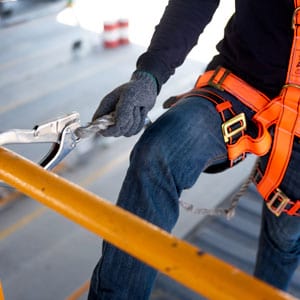Equipments
Self-Protection Plans
![]() CONTEXT
CONTEXT
A self-protection plan is a system of actions and measures stipulated to prevent and control risk situations and emergencies in relation to people and establishments. The culture of health and safety that is sought, therefore, has the aim of minimising the likelihood of a risk occurring and of guaranteeing the safety of all in emergency situations.
In accordance with Decree 30/2015, of 3 March, centres, establishments, facilities and/or premises for teaching, healthcare, shows and recreational activities and other activities covered by the self-protection regulation, must have a Self-Protection Plan that has been prepared by their trained technical team and inscribed in the Self-Protection Plan Register of the corresponding autonomous community.
![]() OBJECTIVE
OBJECTIVE
- Implement and regulate a culture of health and safety in facilities to minimise the likelihood of a risk occurring and guarantee the safety of all in the case of an emergency.
![]() PROPOSALS AND RECOMMENDATIONS
PROPOSALS AND RECOMMENDATIONS
- Designate a competent technician accredited by the public administration to pre-pare and sign the Self-Protection Plan, a director to manage it and a director to implement the Emergency Plan.
- Compile the necessary documentation about the premises of the facility and pre-pare the Self-Protection Plan.
- Register the Self-Protection Plan with the corresponding body of the autonomous community and implement it in the facility.
- Maintain the efficacy of the Self-Protection Plan, review it and periodically update it, ensuring it is a living document.
- Classify, in accordance with the Technical Building Code (CTE), the premises and risk zones in accordance with: a) the characteristics of the building; b) the most suitable occupation density and the evacuation conditions, and c) the fire protection installations in accordance with the planned use of the building.
- Define fire-resistant building structural elements in accordance with the use of the building. Moreover, although it is not always compulsory, ensure the use of emergency lifts, guarantee safety by means of the use of suitable lighting and provide signage for manual firefighting installations.
- Plan and schedule different training and simulation activities based on the Self-Protection Plan of the facility. Designate observers to improve especially critical points for people with functional diversity.
- Establish an emergency protocol that guarantees that verbal announcements do not coincide with acoustic alarms. Verbal announcements must be transmitted in at least three languages.
- Provide incentives for the voluntary implementation of Self-Protection Plans for public buildings that are not legally required to have them.
![]() REFERENCE EXPERIENCES
REFERENCE EXPERIENCES
- Jesús Ángel Valencia Sar (2011) Plan de Autoprotección del centro CIFP COROSO. Consellería de Educación e Ordenación Universitaria. Xunta de Galicia.
- Plan autoprotección de la Casa de Cultura de Ortuella (Bizkaia), 2015..
![]() LEGISLATION
LEGISLATION
- Llei 31/1995, de 8 de novembre, de prevenció de riscos laborals.
- Reial Decret 393/2007, de 23 de març, pel qual s'aprova la Norma bàsica d'autoprotecció dels centres, establiments i dependències dedicats a activitats que puguin donar origen a situacions d'emergència.
- Llei 4/1997, de 20 de maig, de protecció civil de Catalunya
![]() STUDIES AND TECHNICAL DOCUMENTATION
STUDIES AND TECHNICAL DOCUMENTATION
- Generalitat de Catalunya. Plans d'autoprotecció i registre electrònic HERMES.
- Generalitat de Catalunya, 2011. Guia per a la redacció de plans d'autoprotecció de centres municipals.
- Ferreira Gordillo,Luis; Marga Moralo Fernández; Ana Belén Sánchez Morales, 2011. Guía práctica para la elaboración e implantación de planes de autoprotección y/o medidas de emergencia en las empresas. Gabinete Técnico de Prevención de Riesgos Laborales de la Confederación Regional Em-presarial Extremeña (CREEX).
More information about addressing the Public Health Service: entornurbasalut@diba.cat
Date of last update:
dt., 11 de maig 2021 16:32:13 +0000








 CONTEXT
CONTEXT 
 OBJECTIVE
OBJECTIVE  PROPOSALS AND RECOMMENDATIONS
PROPOSALS AND RECOMMENDATIONS  REFERENCE EXPERIENCES
REFERENCE EXPERIENCES  LEGISLATION
LEGISLATION  STUDIES AND TECHNICAL DOCUMENTATION
STUDIES AND TECHNICAL DOCUMENTATION 

